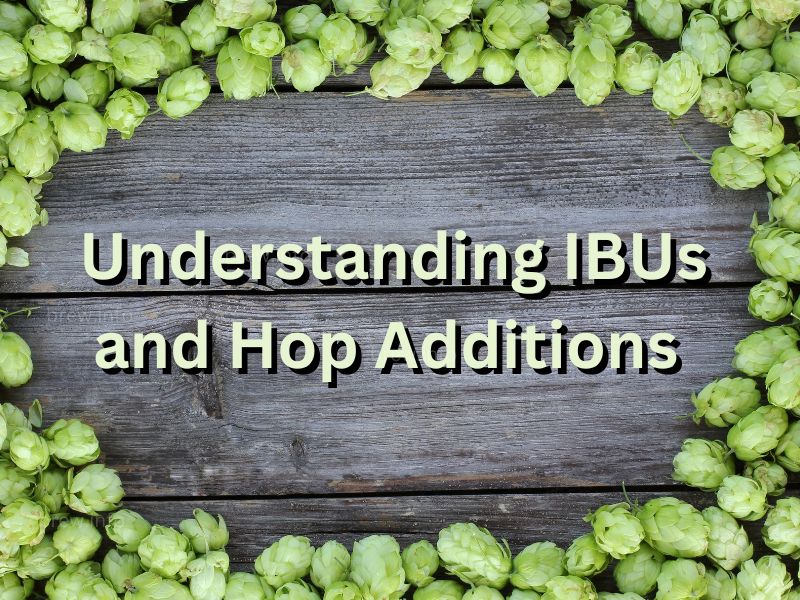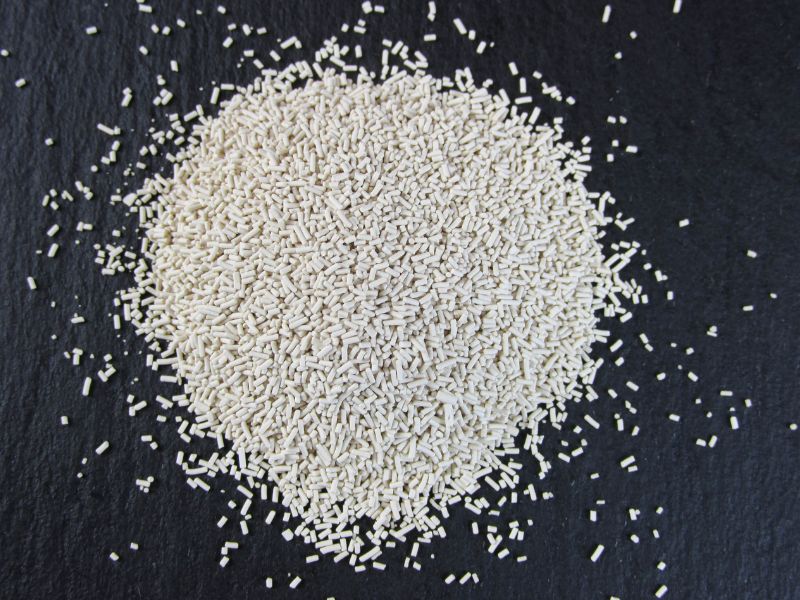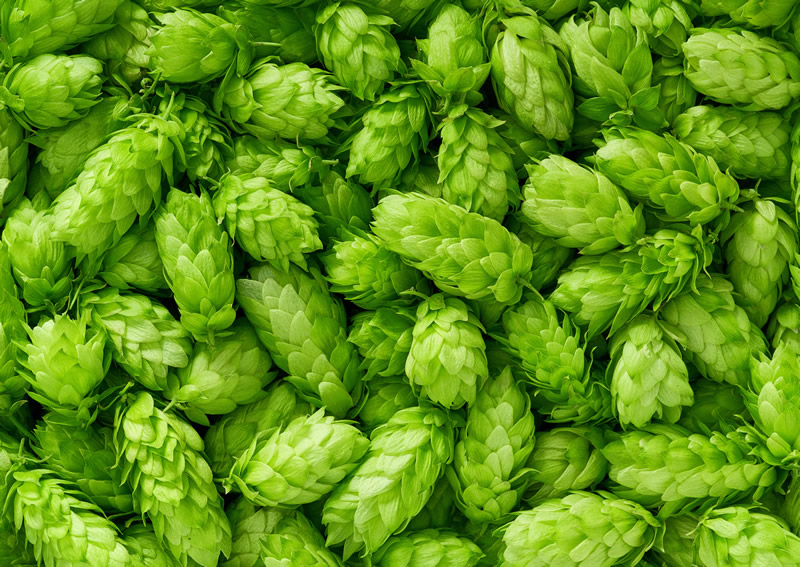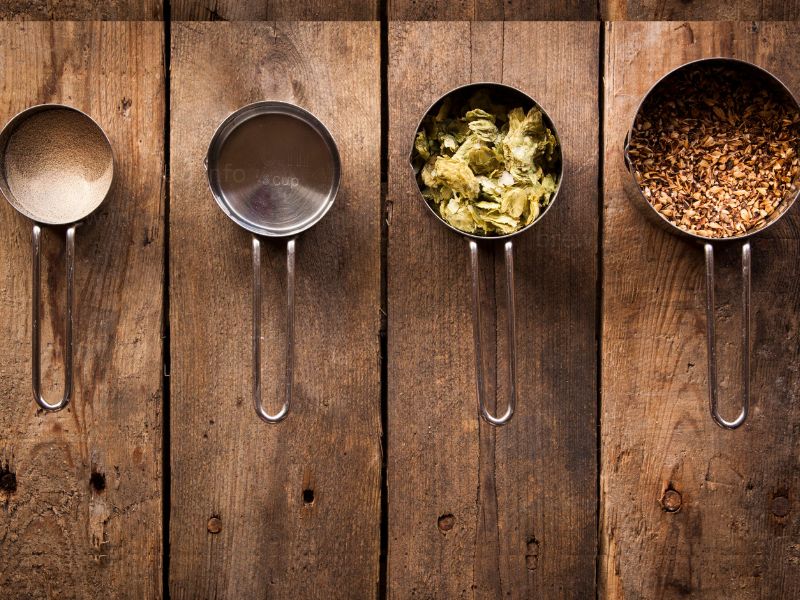Hops – The Flavorful Backbone of Brewing
When we think about homebrewing and beer in general, our minds often leap to a single ingredient: hops. Hops are the soul of beer, adding the characteristic bitterness, flavor, and aroma that many beer enthusiasts love. Understanding these little flowers can make a significant difference in your homebrewing journey. They can elevate your beer from good to fantastic, providing a depth of flavor and complexity that is second to none.
Hops, a key player in the brewing process, are used primarily for their bittering, flavoring, and aromatic qualities. They contribute to what’s known as the International Bitterness Units (IBUs), which indicate the potency of the bitterness in your brew. But IBUs are just one aspect of the hops story. Let’s dive in and see how these beautiful flowers can enhance your homebrewing experience.
Discovering the Bitterness – All About IBUs
The term “IBUs” might sound complicated, but it’s pretty straightforward. International Bitterness Units (IBUs) measure the amount of bittering compounds – specifically isohumulones – present in your beer. When hops are boiled during brewing, they release these isohumulones, resulting in a bitter taste that counters the malt’s sweetness.
Consider a highly-hopped IPA. This style often has high IBU levels, frequently over 60, creating a bitter taste that lingers on the palate. On the flip side, a malt-forward beer like a traditional English brown ale might only have around 20 IBUs, giving it a much more subdued bitterness. So, in essence, a higher IBU doesn’t just mean more hops; it means more bitterness. It’s this balance that you, as a homebrewer, must strike to create a beer that’s uniquely yours.
Alpha Acids – The Main Drivers of Bitterness
Hops have several components that contribute to beer’s taste and aroma, but when it comes to bitterness, alpha acids take center stage. These chemical compounds are primarily responsible for the bitter taste that balances the sweetness of the malt in your beer.
Alpha acids are found in the hop’s resin glands and aren’t bitter in their raw state. It’s only when they’re subjected to the heat of boiling during the brewing process that these acids undergo a process called isomerization. This process transforms them into iso-alpha acids, which give beer its characteristic bitter flavor.
In essence, the higher the alpha acid content of the hop variety you choose, the more potential bitterness it can impart to your beer. It’s important to note that the actual bitterness level also depends on how long the hops are boiled and other brewing factors. For example, a hop variety with 10% alpha acids boiled for a longer period will contribute more bitterness than the same variety boiled for a shorter time.
Brewers use these principles to carefully calculate the bitterness of their beer, often measured in International Bitterness Units (IBUs). By understanding the alpha acid percentage of the hops and adjusting the boil time, they can control the final bitterness level, creating a beer that’s perfectly balanced to their taste.
As a homebrewer, becoming familiar with alpha acids can give you more control over your brew’s outcome. By selecting hop varieties with the desired alpha acid content and controlling your boil times, you can dial in the precise level of bitterness you desire. This is yet another tool in your brewing toolbox, helping you craft a beer that is truly yours.
The Calculation of IBUs – A Brewer’s Math
Calculating International Bitterness Units (IBUs) might sound like a complex task, but it’s all about understanding the key factors involved: the alpha acid content of your hops, the volume of your brew, the weight of the hops used, and the time they spend boiling.
Here’s a simplified formula often used by brewers to estimate IBUs:
IBUs = [(Weight of hops in grams) * (Alpha Acid %) * (Boil Time Factor) * 1000] / (Volume of wort in liters)
Let’s break down this formula:
- Weight of hops in grams: This is the total weight of hops you’re using in your brew, measured in grams.
- Alpha Acid %: The percentage of alpha acids in your chosen hop variety. For instance, a hop variety like Columbus might have an alpha acid percentage of around 14-16%.
- Boil Time Factor: The longer hops are boiled, the more alpha acids are isomerized, contributing to bitterness. But it’s not a linear relationship, hence the need for a factor. For a 60-minute boil, this factor is roughly 0.23, for 30 minutes it’s about 0.15, and for 15 minutes, it’s approximately 0.10. For dry hopping or very short boils (under 10 minutes), it’s effectively 0, as not enough heat is applied to significantly isomerize the alpha acids.
- Volume of wort in liters: The total volume of the wort you’re brewing, in liters.
While this formula provides a reasonable estimate, keep in mind that there are many factors involved in the actual isomerization of alpha acids, including the specific gravity of the wort, the pH level, and more. For a more accurate prediction, there are brewing software options available that take into account a wider range of factors. However, this simplified formula can still provide a good starting point for understanding and predicting the bitterness of your beer.
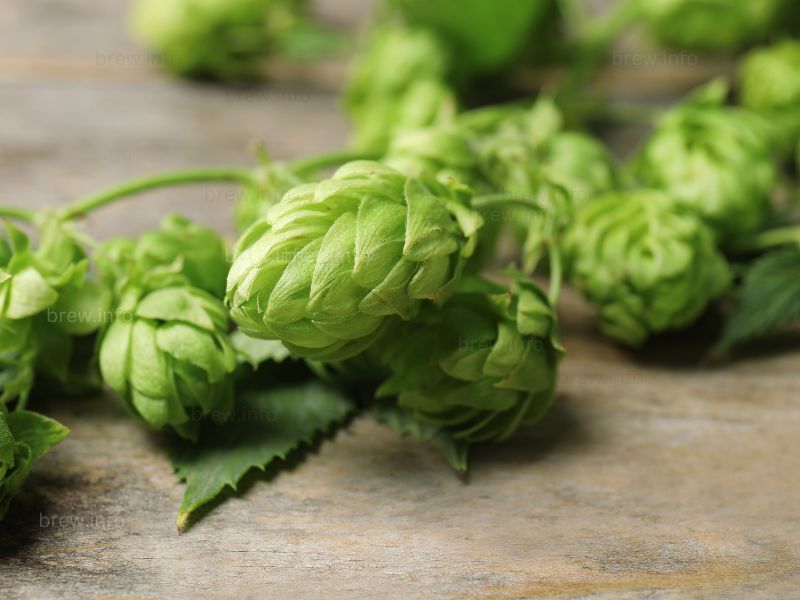
A Splash of Flavor – The Role of Hops in Beer’s Taste
Bitterness might be the most prominent trait hops contribute, but it’s far from the only one. Hops also add flavor to beer, and how they do so is influenced by when they’re added to the boil. The boil is a crucial step in the brewing process, and the timing of hop additions can dramatically change your beer’s profile.
Think about making soup. If you add herbs early in the cooking process, their flavor subtly infuses the entire soup. But if you sprinkle them in at the end, their taste is more noticeable and distinct. The same logic applies to brewing. Earlier hop additions contribute to bitterness, while hops added later in the boil will impart more of their flavor and aroma to the beer.
By adjusting when you add your hops, you can create a plethora of unique beer styles. Some may be more bitter, some more floral, others might be more citrusy or piney, and this is the beauty of homebrewing.
Breathe In The Aroma – Hops and the Nose
Just as with flavor, the timing of hop additions impacts the beer’s aroma. Late additions, and even post-boil “dry hopping,” allow hops to contribute their volatile aromatic compounds without being driven off by boiling. This process can make your beer smell like everything from a pine forest to a tropical fruit grove, depending on the hop variety used.
Hops like Cascade, with their grapefruit-like aroma, or Citra, with their strong citrus and tropical fruit notes, are popular choices for creating aromatic brews. By understanding how to manipulate hop additions, you can control not only the flavor of your beer but also how it smells, contributing to a more full and rounded sensory experience.
Journey Through Hop Varieties
There are hundreds of hop varieties available to homebrewers, each with its unique character. Familiarizing yourself with these can lead to a deeper understanding and greater control over your brewing outcome.
For instance, consider noble hops, the traditional European varieties like Saaz, Hallertau, Tettnang, and Spalt. They’re known for their delicate balance of bitterness, flavor, and aroma, often contributing herbal, floral, and spicy notes.
On the other hand, American hop varieties like Amarillo, Centennial, or Simcoe, are renowned for their bold and intense profiles, often imparting citrusy, piney, and fruity notes, making them a favorite for hop-forward styles like American IPAs.
Hops – More Than Just Beer
While hops are predominantly associated with beer, they serve other purposes too. For instance, hops act as a natural preservative, extending the shelf life of your brew. They also play a role in head retention, ensuring your beer maintains a frothy top throughout the drinking experience. In short, these mighty little flowers carry a lot of weight in the brewing world.
Hops also provide potential health benefits. They are rich in antioxidants, and certain compounds in them may aid sleep and support overall health. Thus, understanding and using hops goes beyond simply creating a tasty brew; it’s also about celebrating the multifaceted nature of this fantastic plant.
Perfecting Your Hop Additions – The Art of Timing
Perfecting your hop additions is part science, part art. Start by knowing your desired outcome. If you’re aiming for a beer style with a significant hop presence, you’ll likely want a combination of early, mid, and late boil additions, perhaps even followed by a dry hop phase.
Remember, early additions contribute to bitterness, while those thrown in later will impart more flavor and aroma. Also, the same hop variety can yield different results based on when it’s added. A mid-boil addition of Citra hops may lend a citrusy flavor to your beer while using it for dry hopping can make the citrus aroma the star of the show.
Understanding hop additions is like understanding the layers of a complex song. Every note plays its part, and when they all come together, they create a harmony that is music to your palate.
The Mighty Hops – A Brewmaster’s Best Friend
So, in the world of homebrewing, hops are far more than a mere ingredient. They’re your partner in crafting an exceptional beer. They’re the bitter counterpoint to the malt’s sweetness, the symphony of flavors in every sip, and the enticing aroma that fills the air when you crack open a bottle of your homebrew.
By understanding the bitterness levels, the flavor contributions, and the aromatic potential of different hops, you can have greater control over your homebrew. Whether you’re brewing a hop-heavy West Coast IPA or a subtly balanced Pilsner, your understanding and application of hops can make all the difference.
So, grab your brew kettle, some grains, and of course, your hops. The world of homebrewing awaits!
© 2011-2023 by Brew.info. All rights reserved. No part of this document may be reproduced or transmitted in any form or by any means, electronic, mechanical, photocopying, recording, or otherwise, without prior written permission of Brew.info.

